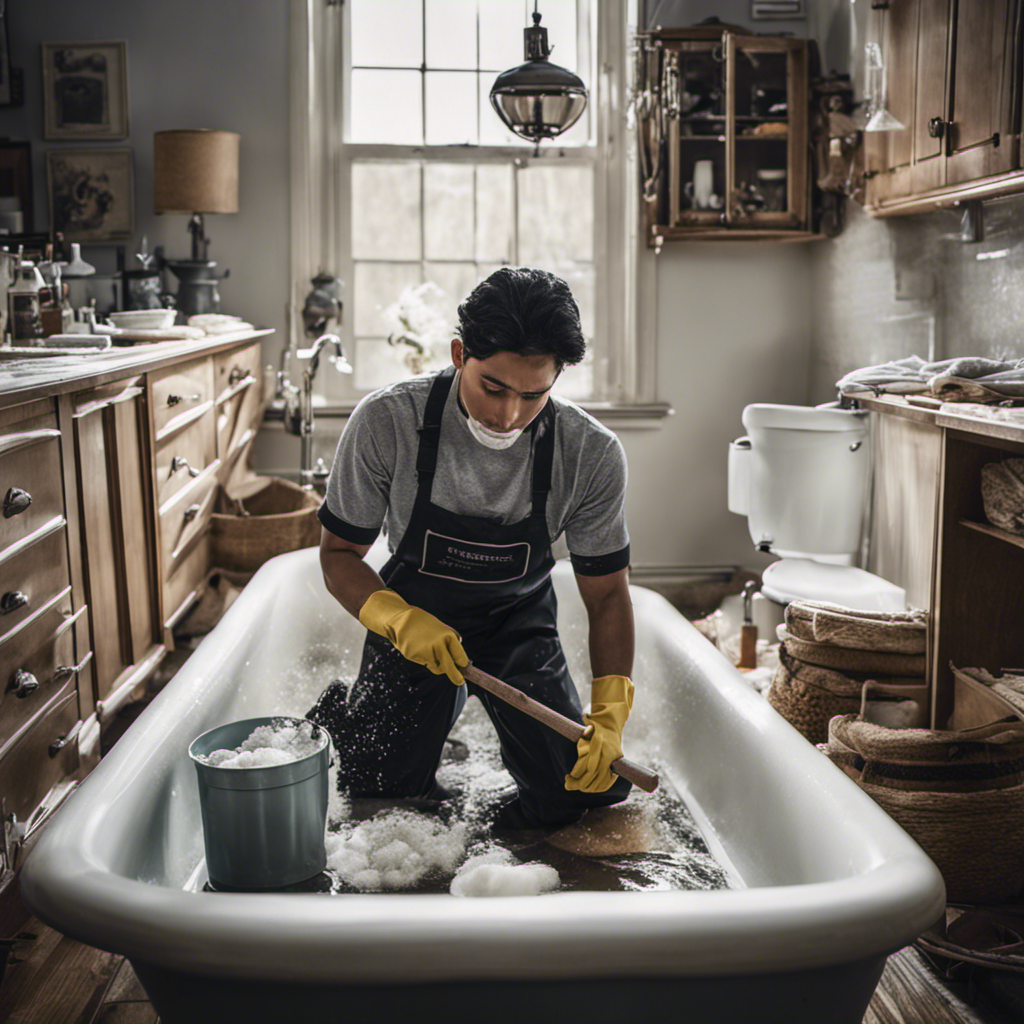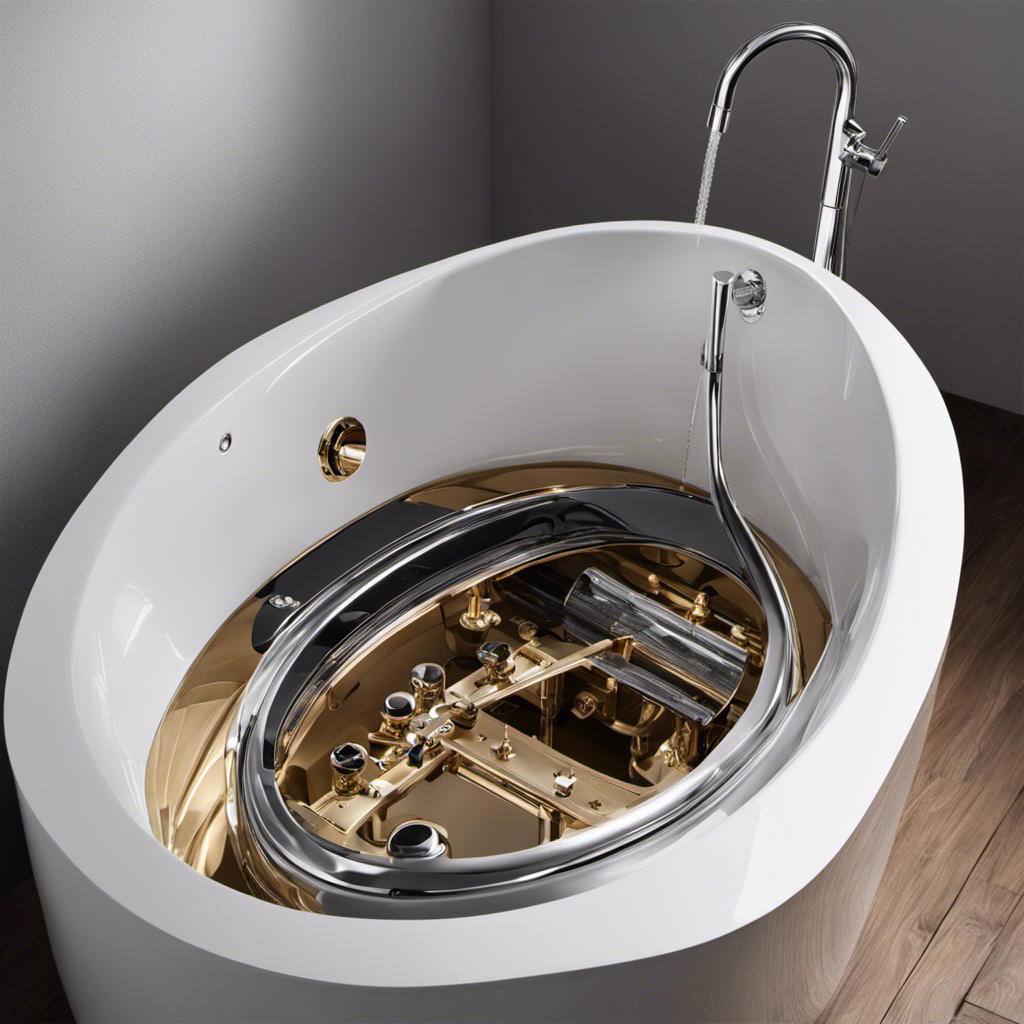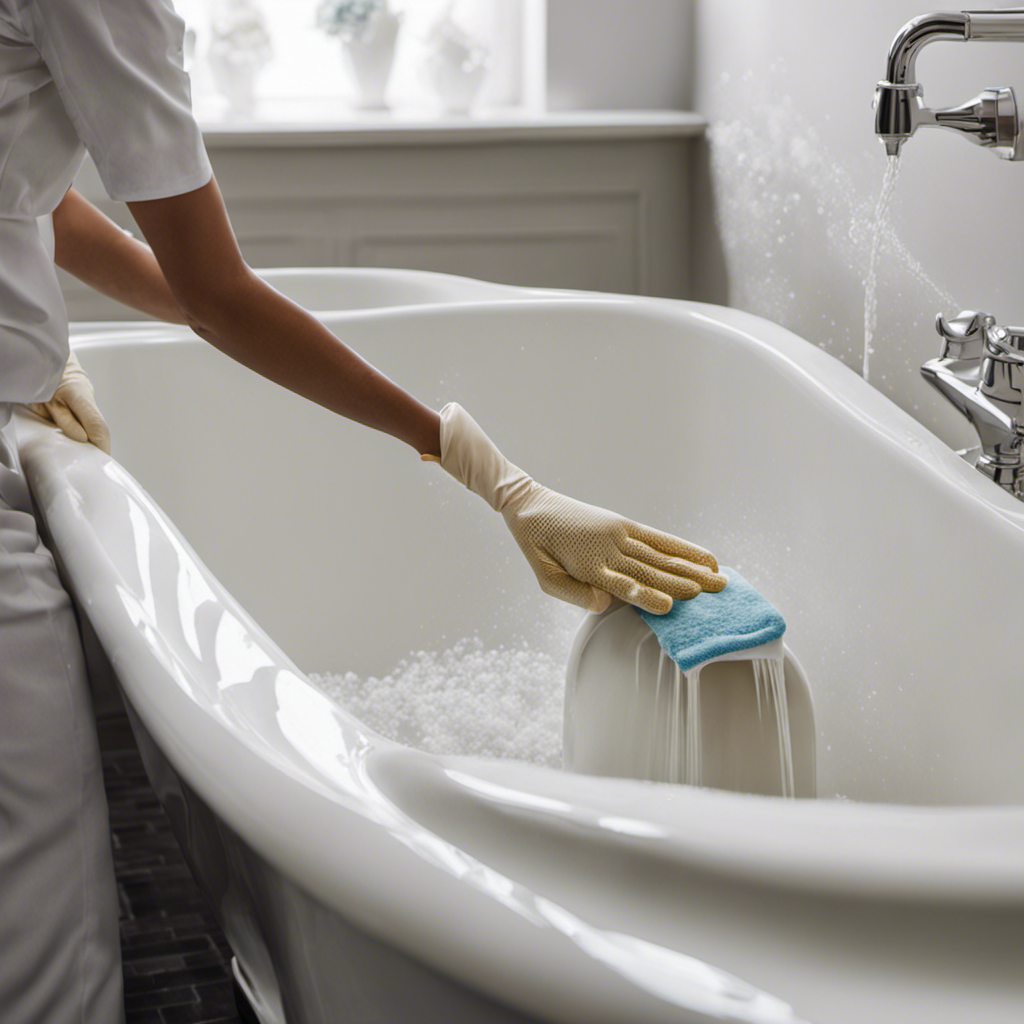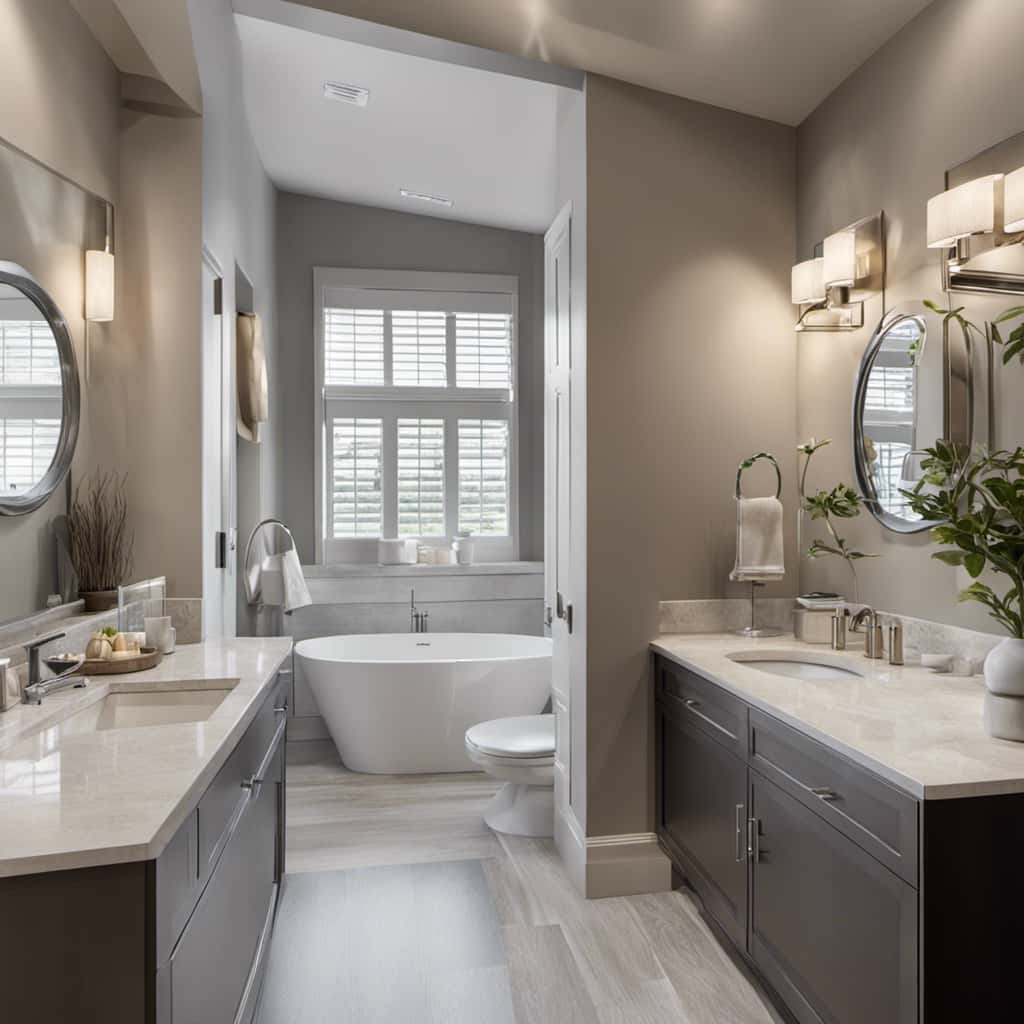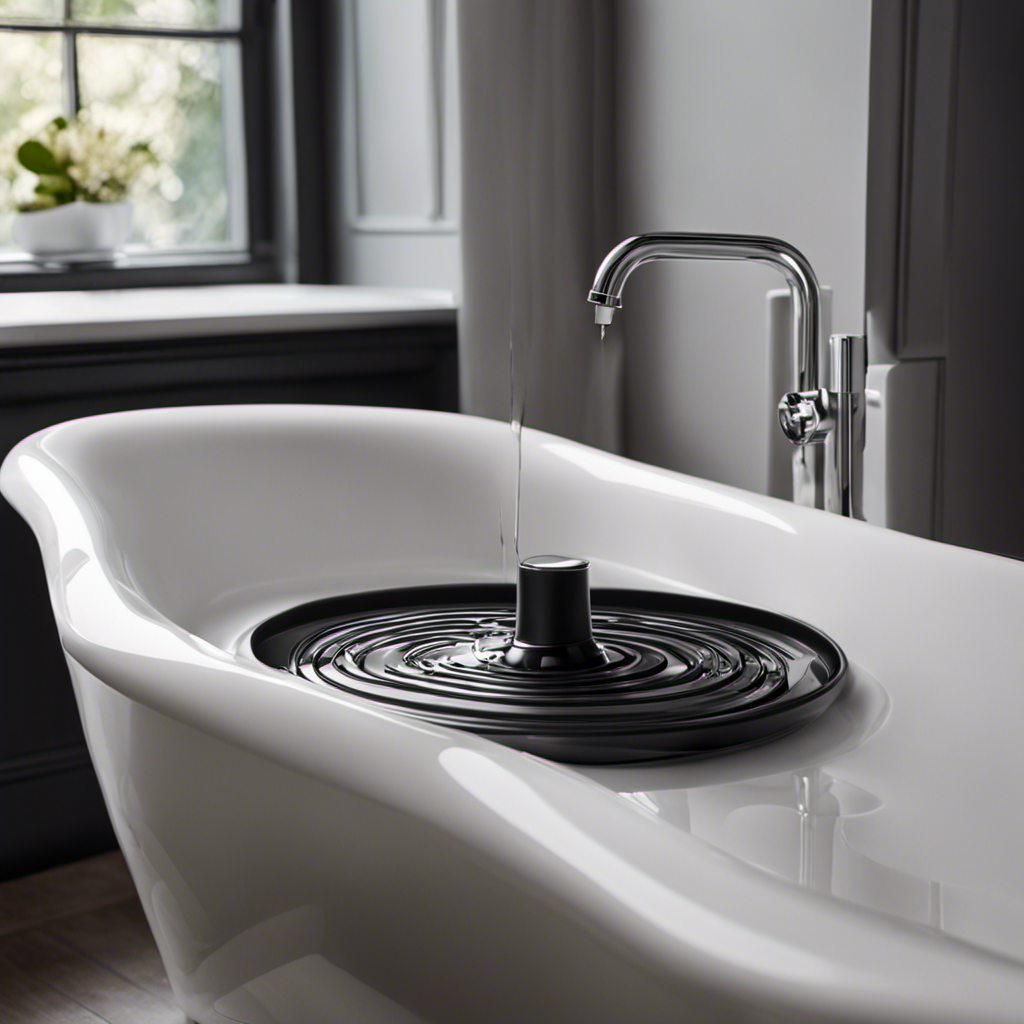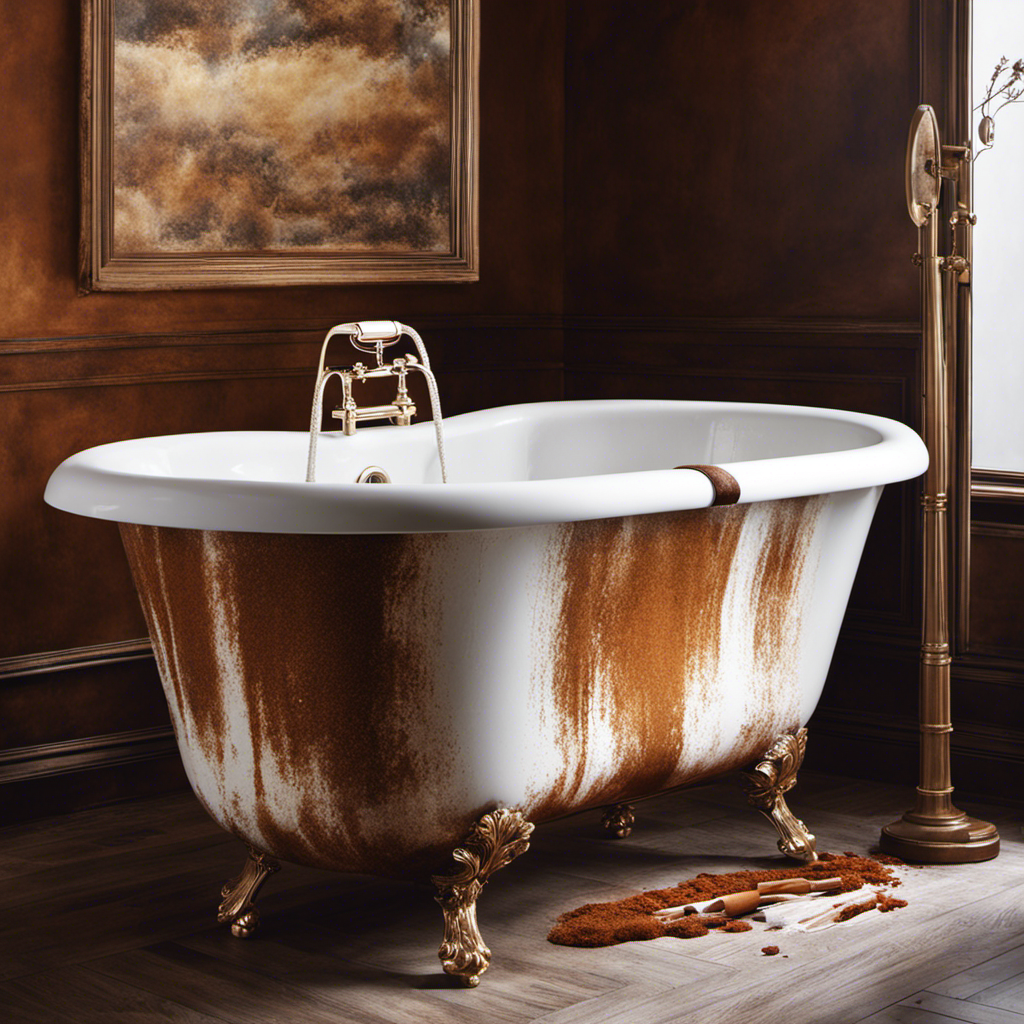Are you tired of standing ankle-deep in water every time you take a shower? Well, fear not, because we’ve got the solution for you!
In this article, we’ll show you how to unclog your bathtub drain using simple home remedies. No need to call a plumber just yet – with a few easy steps, you can tackle this problem yourself.
So, roll up your sleeves and get ready to say goodbye to that stubborn clog!
Key Takeaways
- Hair buildup and soap scum are common causes of bathtub clogs.
- Baking soda and vinegar can be used as a safe and effective home remedy to dissolve clogs.
- Using a plunger or alternative methods like a drain snake or wire hanger can help dislodge debris causing the clog.
- Regular maintenance of tools like the plunger and cleaning the drain stopper can prevent further clogs.
Identifying the Cause of the Clog
Before attempting any home remedies, it’s important to identify the cause of the clog in your bathtub drain. Understanding the causes of bathtub clogs and recognizing the signs of a clogged bathtub drain can help you effectively address the issue.
There are several common causes of bathtub clogs, such as hair buildup, soap scum, and foreign objects. Hair is one of the primary culprits, as it easily gets trapped in the drain and accumulates over time. Soap scum can also build up and contribute to clogs. Additionally, objects like toys or jewelry accidentally dropped into the bathtub can obstruct the drain.
Signs of a clogged bathtub drain include slow drainage, standing water, and gurgling sounds. By identifying the cause of the clog, you can choose the appropriate home remedy to unclog your bathtub drain effectively.
Using Baking Soda and Vinegar
When it comes to unclogging your bathtub drain, one effective and natural solution is using a chemical reaction between baking soda and vinegar.
This combination creates a powerful fizzing action that can break down and dissolve the clog in your drain.
Not only is this method highly effective, but it is also a safe and eco-friendly alternative to harsh chemical drain cleaners.
Chemical Reaction Effectiveness
You can increase the effectiveness of the chemical reaction by using a combination of baking soda and vinegar. This powerful duo creates a fizzing action that helps break down the clog in your bathtub drain. However, it’s important to follow some safety precautions when using this method. Make sure to wear gloves and eye protection to avoid any contact with the chemicals. Also, ensure that the area is well-ventilated to prevent any inhalation of fumes. To help you understand the effectiveness of this chemical reaction, take a look at the table below:
| Chemical | Baking Soda | Vinegar |
|---|---|---|
| pH Level | 8.1 | 2.4 |
| Reaction | Base | Acid |
| Safety | Non-toxic | Eye Irritant |
Using this eco-friendly drain cleaner is not only effective but also safe for the environment. Now, let’s move on to the next section and explore a natural drain cleaning solution.
Natural Drain Cleaning Solution
Using a combination of baking soda and vinegar is an effective and environmentally-friendly solution for cleaning drains. If you’re looking for DIY drain cleaning tips or natural remedies for clogged drains, this method is a great option.
To start, pour half a cup of baking soda down the drain, followed by half a cup of vinegar. The baking soda will help break down any grease or grime, while the vinegar will create a chemical reaction that helps dissolve blockages. Let it sit for about 15 minutes, then flush the drain with hot water.
This method is safe for most types of pipes and won’t harm the environment. Plus, it’s inexpensive and easily accessible. Give it a try the next time you’re dealing with a clogged drain!
Applying a Plunger
When it comes to unclogging drains, one of the most effective tools you can use is a plunger. The plunger technique, when properly executed, can quickly and efficiently clear blockages in your pipes.
However, it’s important to be aware of common plunger mistakes that can hinder your progress.
Additionally, if the plunger method doesn’t work for you, there are alternative drain unclogging methods that you can try.
Plunger Technique Explained
To effectively unclog your bathtub drain using the plunger technique, make sure the plunger creates a tight seal around the drain opening. This will create the necessary suction to dislodge the clog and allow water to flow freely again. Plungers come in different types and sizes, so it’s important to choose the right one for your bathtub drain. The most common plunger for this task is the cup plunger, which has a flat bottom and a wide rim for better sealing. However, there are also accordion plungers and flange plungers that are specifically designed for different types of drains. To maintain your plunger’s effectiveness, regularly clean it with warm water and soap after each use, and replace it if the rubber becomes cracked or damaged.
| Plunger Type | Description |
|---|---|
| Cup Plunger | Flat bottom, wide rim for better sealing |
| Accordion Plunger | Expands and contracts for different drain sizes |
| Flange Plunger | Has an extra rubber flap for toilets |
Common Plunger Mistakes
One common mistake people make with plungers is not creating a tight seal around the drain opening, which can prevent effective unclogging. To ensure you are using your plunger correctly and avoiding any issues, keep the following tips in mind:
-
Proper seal: Before plunging, make sure the plunger is placed firmly over the drain opening. This creates the necessary suction for effective unclogging.
-
Correct technique: Use quick and forceful plunges, pushing and pulling the plunger in a vertical motion. This helps dislodge any clogs and allows water to flow freely.
-
Patience: Don’t give up too soon. Sometimes, stubborn clogs require multiple attempts. Be persistent and keep trying until the water starts to drain properly.
In addition to plungers, there are also common plunger alternatives you can try, such as drain snakes or chemical drain cleaners. If you encounter any issues with your plunger or have difficulty unclogging your bathtub drain, consider troubleshooting the problem to identify any underlying issues.
Alternative Drain Unclogging Methods
Now that you know the common mistakes to avoid when using a plunger, let’s explore some alternative methods to unclog your bathtub drain. If you prefer natural remedies or eco-friendly alternatives, you’re in luck! There are several options you can try before resorting to harsh chemicals.
One popular method is using a mixture of baking soda and vinegar. Start by pouring half a cup of baking soda down the drain, followed by half a cup of vinegar. Let the mixture sit for about 30 minutes, then flush it down with hot water. The chemical reaction between the baking soda and vinegar can help break down the clog.
Another option is to use a drain snake or a wire hanger. Straighten the wire hanger or insert the drain snake into the drain and slowly push it through, twisting it as you go. This can help dislodge any debris that may be causing the clog.
Removing and Cleaning the Drain Stopper
Start by unscrewing the drain stopper to remove it from the bathtub drain. This step is crucial in order to effectively clean the drain and prevent further clogs. Once the drain stopper is removed, you can proceed with cleaning it using eco-friendly cleaning products.
Here are three eco-friendly options you can use:
-
Baking Soda and Vinegar: Make a paste using equal parts baking soda and water. Apply the paste to the drain stopper and let it sit for 15-20 minutes. Then, pour vinegar over the stopper and let it fizz. Scrub the stopper with a brush and rinse thoroughly.
-
Lemon Juice: Cut a lemon in half and squeeze the juice onto the drain stopper. Let it sit for a few minutes, then scrub with a brush and rinse.
-
Castile Soap: Apply a few drops of castile soap onto the drain stopper and scrub with a brush. Rinse thoroughly to remove any residue.
Utilizing a Plumbing Snake or Drain Auger
To effectively clear a clog in your bathtub, you can use a plumbing snake or a drain auger. These tools are beneficial because they allow you to unclog your drain without the use of any chemicals. With a plumbing snake, you can easily navigate through the pipes and dislodge any debris causing the clog. Similarly, a drain auger works by rotating a long, flexible cable down the drain to break up the blockage. Both options are practical and effective for clearing clogs and restoring proper drainage in your bathtub. By avoiding the use of harsh chemicals, you not only protect your plumbing system but also minimize the risk of any harmful residues remaining in your bathtub.
| Plumbing Snake Benefits | Unclogging Without Chemicals |
|---|---|
| Easy to use | Protects plumbing system |
| Effective | Minimizes risk of residues |
| Versatile | Restores proper drainage |
Trying a Homemade Drain Cleaner
If you’re looking for an alternative solution, you can try using homemade drain cleaners. Not only are they effective in unclogging your bathtub drain, but they are also eco-friendly and cost-effective.
Here are three homemade drain cleaner alternatives that you can try:
-
Baking Soda and Vinegar: Start by pouring half a cup of baking soda down the drain, followed by half a cup of vinegar. Let it sit for about 30 minutes, then flush it with hot water. The chemical reaction between baking soda and vinegar helps break down the clog.
-
Salt and Hot Water: Mix half a cup of salt with a few liters of hot water. Pour it down the drain and let it sit for a few minutes. The salt will help dissolve the clog, and hot water will flush it away.
-
Lemon Juice and Baking Soda: Squeeze the juice of one lemon down the drain, followed by half a cup of baking soda. Let it sit for 30 minutes, then flush it with hot water. The lemon juice acts as a natural deodorizer while the baking soda helps break down the clog.
These homemade drain cleaner alternatives are not only effective but also safe for your pipes and the environment. Give them a try before resorting to chemical-based products.
Preventive Measures to Avoid Future Clogs
Using preventive measures, you can reduce the likelihood of future clogs in your pipes. One of the key aspects to consider is measuring water flow. By keeping an eye on the rate at which water flows down your drains, you can identify any issues early on. Slow drainage can be an indicator of a potential clog, giving you the opportunity to take action before it becomes a major problem.
Additionally, using drain screens is an effective way to prevent debris from entering your pipes and causing clogs. These screens are simple to install and are designed to catch hair, soap scum, and other small particles that can accumulate over time.
When to Seek Professional Help
Now that you know how to prevent future clogs, it’s important to recognize when it’s time to seek professional help for a severe bathtub drain clog. Here are some signs that indicate you may need professional assistance:
-
Water backup: If water is consistently backing up into your bathtub or taking a long time to drain, it could be a sign of a severe clog deep within the pipes.
-
Foul odors: A persistent, unpleasant smell coming from your drain is a clear indication of a clog that needs professional attention.
-
Multiple clogged drains: If multiple drains in your home, including sinks and toilets, are experiencing issues, it could be a sign of a major blockage in the main sewer line.
Regular drain maintenance is crucial in preventing severe clogs. However, if you notice any of these signs, it’s best to call a professional plumber who has the tools and expertise to resolve the issue safely and effectively.
Don’t hesitate to seek help to avoid further damage and inconvenience.
Frequently Asked Questions
What Are Some Common Signs That Indicate a Bathtub Drain Is Clogged?
Warning signs of a clogged bathtub drain include slow drainage, standing water, and unpleasant odors. To prevent clogs, use a drain cover, avoid pouring grease or hair down the drain, and regularly clean the drain.
Can I Use a Different Type of Vinegar Instead of White Vinegar for the Baking Soda and Vinegar Method?
Yes, you can use apple cider vinegar instead of white vinegar for the baking soda and vinegar method. It’s a common alternative that can still effectively help in unclogging your bathtub drain.
Is It Necessary to Remove the Drain Stopper Before Using a Plunger?
Yes, you should remove the drain stopper before using a plunger. Trying to use a plunger with the stopper in place will not provide enough suction to effectively unclog the drain.
How Often Should I Clean the Drain Stopper to Prevent Clogs?
To prevent bathtub drain clogs, it’s important to clean the drain stopper regularly. By keeping it free from debris and build-up, you can ensure water flows smoothly down the drain. Here’s how to clean a drain stopper effectively.
Are There Any Safety Precautions I Should Take When Using a Plumbing Snake or Drain Auger?
When using a plumbing snake to unclog a bathtub drain, it’s important to take safety precautions. Wear gloves and protective eyewear to prevent injury. Make sure to follow the manufacturer’s instructions for proper use.
Conclusion
Now that you know how to unclog a bathtub drain using various home remedies, you are equipped with the knowledge and tools to tackle this common household problem.
By identifying the cause of the clog and utilizing methods such as baking soda and vinegar, a plunger, or a plumbing snake, you can effectively clear the blockage and restore proper drainage.
Remember to take preventive measures to avoid future clogs, but if all else fails, don’t hesitate to seek professional help.
Don’t let a clogged bathtub drain disrupt your daily routine any longer – take action now and enjoy a stress-free shower experience.
